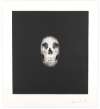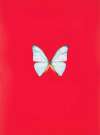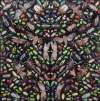Eat
The Rich
In his 2017 Eat The Rich print series, a set of 12 screen-prints, Damien Hirst parodies the packaging of pharmaceutical products, replacing medicine brand names with titles which imply violence and aggression—‘anarchy,’ ‘riot,’ and ‘clash.’ The series reflects Hirst’s ongoing critical interest in the pharmaceutical industry.
Damien Hirst Eat The Rich for sale
Sell Your Art
with Us
with Us
Join Our Network of Collectors. Buy, Sell and Track Demand
Meaning & Analysis
A set of 12 silkscreen prints in editions of 150, the Eat The Rich series combines notions of science and art in typical Damien Hirst style.
The Eat the Rich series reflects Hirst’s interest in the pharmaceutical industry and modern medicine. In the series, Hirst produces prints which depict the packaging of pharmaceutical products. While Hirst maintains the minimalist designs of the pharmaceutical packaging, he replaces the tablets’ brand name with a word implying violence, force or aggression such as ‘anarchy,’ ‘riot,’ and ‘clash.’ The meticulous way Hirst produces his prints aligns with the scientific precision that goes into the creation of medicine. Hirst draws attention to this throughout the series by including scientific detail in his prints, detailing the contents of the pharmaceutical products that he draws. The accurate scientific terminology Hirst includes in his prints in the series make the prints seem like images of real pharmaceutical products, blurring the boundary between art and science.
Hirst’s interest in the pharmaceutical industry and the products they are responsible for producing has been explored throughout his artistic career. While the Eat The Rich series was made in 2017, Hirst first explored depictions of pharmaceuticals while studying Fine Art at Goldsmiths in 1988. Hirst produced an installation, known as the Medicine Cabinet series, in which he filled medicine cabinets with his grandmother’s old tablet boxes. Hirst wanted to explore the interaction between the human body and modern medicine, touching on themes of life and death, myth and medicine. These themes were further explored in Hirst’s The Cure series from 2014, in which the artist rendered a large pill in the Pop Art style popularised by Andy Warhol in the 1960s.







